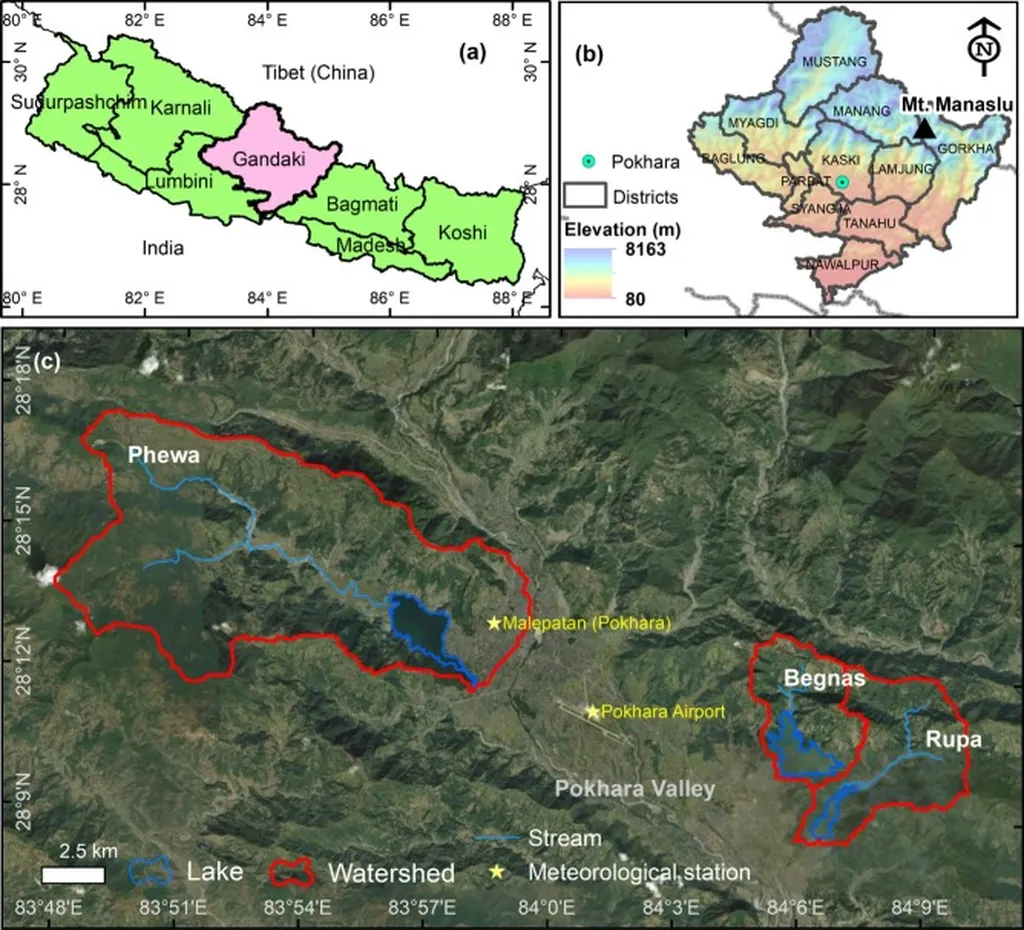In the heart of Nepal’s Pokhara Valley, a silent transformation is unfolding, one that could reshape the way we understand and manage our most precious water resources. A groundbreaking study led by Krishna Prasad Sigdel from the Central Department of Botany at Tribhuvan University has cast a spotlight on the dynamic interplay between climate change, human activity, and the health of three critical wetlands: Phewa, Begnas, and Rupa lakes, all designated as Ramsar sites—internationally recognized wetlands of global importance.
Sigdel and his team employed a powerful combination of historical remote sensing images and geospatial analysis to peel back the layers of change in these lakes and their surrounding watersheds. The findings, published in the journal ‘Watershed Ecology and the Environment’ (translated as ‘Watershed Ecology and the Environment’), are both alarming and enlightening. “We’ve seen an 11.39% decline in the surface area of Phewa Lake since 1989,” Sigdel reveals, a stark indicator of the pressures these ecosystems face. Meanwhile, Begnas and Rupa lakes have remained relatively stable, suggesting a complex narrative at play.
The story doesn’t end with the lakes themselves. The research delves into the intricate web of land use and land cover changes (LULC) and soil erosion within the watersheds. “We’ve observed a significant increase in forest cover, which is a positive sign for carbon sequestration and biodiversity,” Sigdel explains. However, the decline in croplands, while potentially improving water quality by reducing agricultural runoff, has led to severe soil erosion, particularly in areas where agriculture once thrived. This erosion is choking Phewa Lake with sediment, a problem that could have far-reaching implications for water quality and ecosystem health.
The study also sheds light on the human factor. Urbanization, particularly around Phewa Lake, is accelerating, bringing with it pollution and shoreline encroachment. “The commercial impacts are clear,” says Sigdel. “Tourism, real estate, and infrastructure development are all affected by these changes. Understanding these dynamics is crucial for sustainable planning and management.”
Climate change is another piece of this puzzle. The Pokhara Valley is experiencing a steady temperature increase of 0.3°C per decade, while rainfall patterns show only slight, insignificant changes. These climatic shifts are subtly altering the landscape, influencing everything from water levels to soil stability.
So, what does this mean for the future? The research underscores the urgent need for integrated watershed management. “We can’t manage these ecosystems in isolation,” Sigdel emphasizes. “A holistic approach that considers climate change, human activity, and ecological health is essential.”
For the energy sector, the implications are significant. Hydropower, a vital energy source in Nepal, relies heavily on stable water resources. Changes in lake levels and water quality could impact hydropower generation, affecting energy security and economic stability. Moreover, the study’s findings could guide more sustainable practices in land use and urban planning, ensuring that development doesn’t come at the cost of our most valuable natural resources.
As we stand on the precipice of a changing climate, studies like Sigdel’s serve as a clarion call. They remind us that our future is inextricably linked to the health of our ecosystems. By understanding and addressing these changes, we can pave the way for a more sustainable and resilient future.

